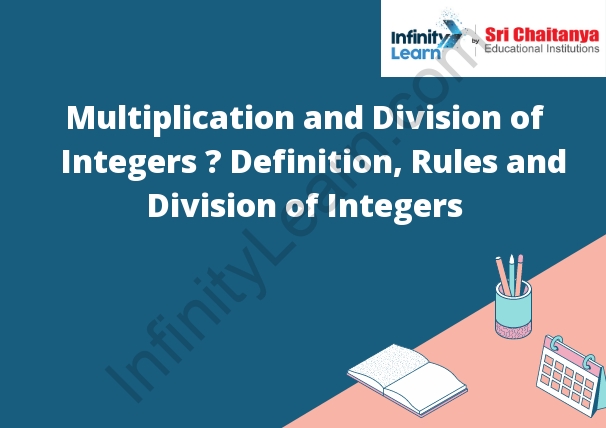Table of Contents
What are Integers?
Integers are whole numbers, including negative numbers and zero.

Multiplication and Division of Integers
Multiplication of Integers
Multiplying integers is simple. Just multiply the two numbers together and write the answer as an integer.
For example, if you are multiplying 5 and 7, you would just multiply 5 by 7 to get 35.
5 × 7 = 35
Similarly, if you are multiplying -5 and 3, you would just multiply -5 by 3 to get -15.
-5 × 3 = -15
Division of Integers
To divide two integers, divide the first number by the second number.
For example, if you are dividing 5 by 7, divide 5 by 7 to get 0.714285.
5 ÷ 7 = 0.714285
1. Closure Rule:
Closure rule states that the members of a set are also the members of the set’s subsets. In other words, the members of a set are also the members of the set’s smaller sets. This rule is also known as the subset law.
2. Commutative Rule:
The commutative rule states that the order of the elements in a multiplication does not affect the product. That is, for any two numbers a and b, a*b=b*a.
3. Associative Rule:
An associative rule is a mathematical rule that states that the order of operations in an equation is not important. This rule is also called the associative law.
4. Distributive Rule:
The distributive rule states that the product of two numbers is equal to the sum of the products of the individual numbers multiplied by their respective coefficients.
For example, the product of 4 and 3 is equal to the sum of the products of 4 and 3 multiplied by their respective coefficients, or 12.
Multiplication of Integers
Multiplication of integers is the process of multiplying two or more integers together to produce a new integer.
The product of two integers is a new integer that is the result of multiplying the two original integers together.
The process of multiplication can be represented using the multiplication symbol, which is an asterisk (*).
For example, the product of 5 and 3 is 15.
5 * 3 = 15
Division of Integers
The integers are all the natural numbers and their opposites.
The natural numbers are 1, 2, 3, 4, 5, and so on.
The opposites of the natural numbers are -1, -2, -3, -4, -5, and so on.
Rules
the rules that govern multiplication and division of integers.
When multiplying two integers together, the result will always be an integer. The sign of the result will be the sign of the two numbers that were multiplied together. For example, if we multiply -5 and 3 together, the result will be -15, because 5 multiplied by 3 is -15. If we multiply 5 and -3 together, the result will be 15, because 5 multiplied by -3 is 15.
When dividing two integers together, the result will always be an integer. The sign of the result will be the sign of the number that was divided by the other number. For example, if we divide -5 by 3, the result will be -1, because 5 divided by 3 is -1. If we divide 5 by -3, the result will be 1, because 5 divided by -3 is 1.






